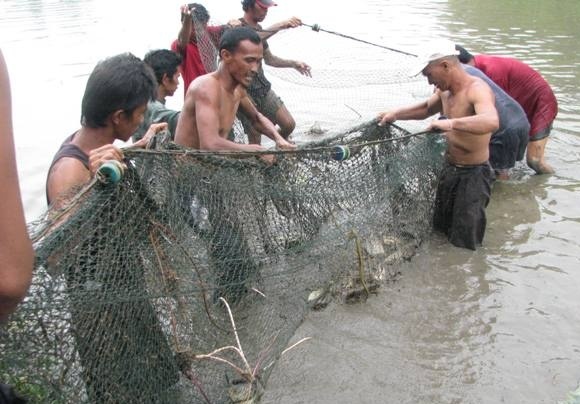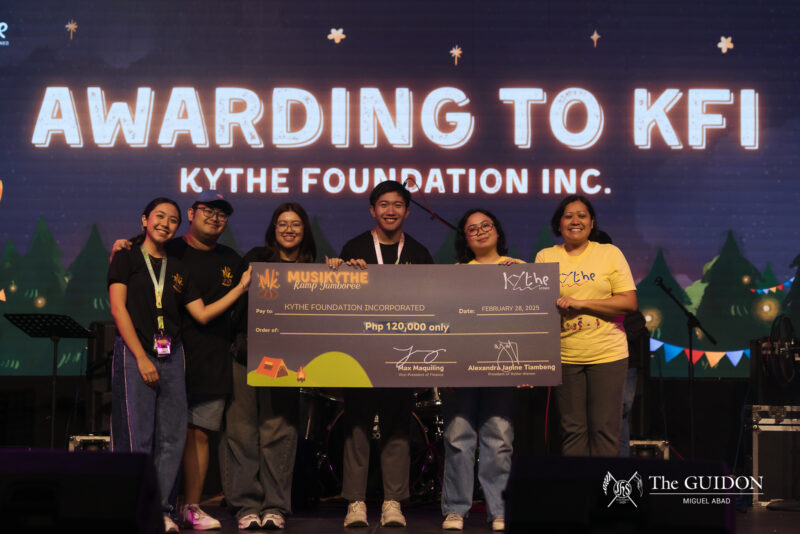The European Union (EU), in coordination with the Bangsamoro Transition Commission and the Office of the Presidential Adviser on the Peace Process (Opapp), gathered campus journalists, faculty members and media personnel for a peace journalism forum titled “Gaps and Gasps in Peace Reportage” on February 26 at the Escaler Hall.
The EU, a politico-economic partnership, is a member of the international monitoring team for the framework agreement on the Bangsamoro between the Philippine government and the Moro Islamic Liberation Front (MILF).
According to EU Delegation to the Philippines Programme Manager Edoardo Manfredini, the role of the media and journalists in the conflicts in Mindanao is crucial in rebuilding the trust of the people to government efforts.
Manfredini said that the media should actively participate in the continuing dialogues by presenting balanced, responsible and accurate reports that will generate information and awareness among the masses.
Moreover, Opapp Assistant Secretary Rose Romero said that there are still people who do not have the benefit of informed understanding of the peace process.
Romero quoted Presidential Adviser on the Peace Process Teresita Deles, saying that the peace process became a culprit in the eyes of the people and they found it difficult to defend.
Deles was referring to the 2011 Albarcar incident, the first major crisis for the Bangsamoro peace process under President Benigno “Noynoy” Aquino III’s administration, which Romero likened to the Mamasapano clash.
Romero said that the media behavior on both incidents can be believed to have gone beyond the ethics and standards of reporting.
“We have responsibility as citizens, leaders of community, as students to [understand] whatever we know about a certain issue,” said Romero.
In his welcome address, School of Social Sciences Dean Filomeno Aguilar Jr., PhD mentioned how the different media practices should be intentionally geared towards the promotion of peace in the country.
Aguilar also cited the Mamasapano clash as evidence of the public’s dependence on the news and journalists in knowing the conflicts the country is experiencing.
“Our reliance on news reporters deepens even more wherein the journalists can either help clarify the issues or speak deep-seated biases that we harbor. Journalists face this challenge,” said Aguilar.
Shifting perceptions
TV5 Aksyon Tonite anchor Ed Lingao shared how both journalists’ and the public’s attitude towards war has changed through the years.
Lingao admitted that war reporting has become a “sexy” game for many broadcasters because of the fame, fortune and recognition of a war coverage reporter.
Moreover, Lingao also said that these reporters tend to become “parachute journalists” who are confined to the mindset of field reporting as a mere narration of what is happening.
“[These reporters are those with] no background, no research, no sense of history [regarding what they are covering], leaving the discussion of the issues [solely] on the other reporters at desk,” said Lingao.
In line with this, Lingao said that it is essential to point out the difference between war and conflict reporting in media.
War reporting, according to Lingao, is a mere delivery of the news composed of basic facts, without really giving out what matters more to the public.
He explained that conflict reporting, on the other hand, is more on the reasons behind and implications of the peace processes, the efforts to restore peace and why people should be involved in the subject matter.
In the Philippine context, Lingao admitted that more reporters tend to lean more towards war reporting rather than conflict reportinh due to the pressure to oversimplify and congest issues for the public.
“For me, the best reporters are those who cover people first, such as the discussion of implications to basic human rights… [Those who] tell stories of people and not just events,” said Lingao.
Filling the gap
Interaksyon Senior Editor Veronica Uy-Vitug shared how their team manages to fill the gap on peace reportage.
One of the gaps, according to Uy-Vitug, is the inactive involvement of the citizens in this matter.
“[The first gap] is you, students, consumers of news, observers, citizens of this country—what is your idea of Mindanao? What is your idea of the Mindanao peace process or the Bangsamoro struggle?” said Uy-Vitug.
She believes that Interaksyon, an online news portal, only caters to the “thinking class” or the “intellectuals” since it utilizes English as a medium.
“The public behavior and the most vicious comments on our articles show that we are failing to engage the [public],” said Uy-Vitug.
Photojournalists’ Center of the Philippines Chair Joe Torres said that another gap in conflict reportage is the journalists’ confusion in covering the real story of a war conflict.
“Journalism is about stories of people. I cover people,” said Torres reiterating Lingao’s point.
Another gap, according to Torres, is the existence of economics of media or what these media corporations are looking for in exchange of profit.
“What are people watching? What are people reading? In reality, violence sells,” said Torres.
For Torres, however, this should not be misinterpreted to mean that the people should close their eyes on the violent reality existing in the country but rather a matter of deciding the extent of what should the public should “see” as news consumers.
Journalistic core duties
Institute for War & Peace Reporting Country Director Rorie Fajardo highlighted why peace reporting matters now more than ever.
Considering that the media creates real-time record of history and has the ability to give “voice to the voiceless,” journalists should focus on the implications of conflicts to the communities involved by letting them speak of their experiences.
“We, as journalists, could do more. We, as citizens, deserve better reporting on complex processes like the peace in Mindanao. Let these [affected] people speak,” said Fajardo.
Fajardo summarized the role that journalists have to play in conflict reporting through six core duties.
Fajardo said that journalists should understand the conflict deeply by immersing themselves in a lot of reading and research about their assigned topics beforehand.
Fajardo added that fair reporting for journalists is obligatory. “Report the complexities and opinions of all factions and sub-factions in a conflict,” she said.
A journalist, according to Fajardo, should report the background and causes of the conflict by accurately representing both the legitimate and perceived grievances of all parties, including the communities.
“[Another] duty is to present the human side [of the conflict]. Represent the trauma and the human stories of victims in a balanced, professional and non-exploitative manner,” added Fajardo.
Fajardo considered reporting on peace efforts as another duty and said that journalists should “report more on the efforts of those working on peace and reconciliation every bit as much as those who exacerbate a conflict.”
Lastly, Fajardo said that for the journalists to recognize their influence to the masses is of utmost importance above all.
“Reporting will affect the conflict and the lives of people [involved] in it,” said Fajardo. “Let the best journalistic practices bloom. Live side-by-side with peace, community and compassion as journalists.”







